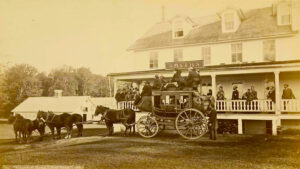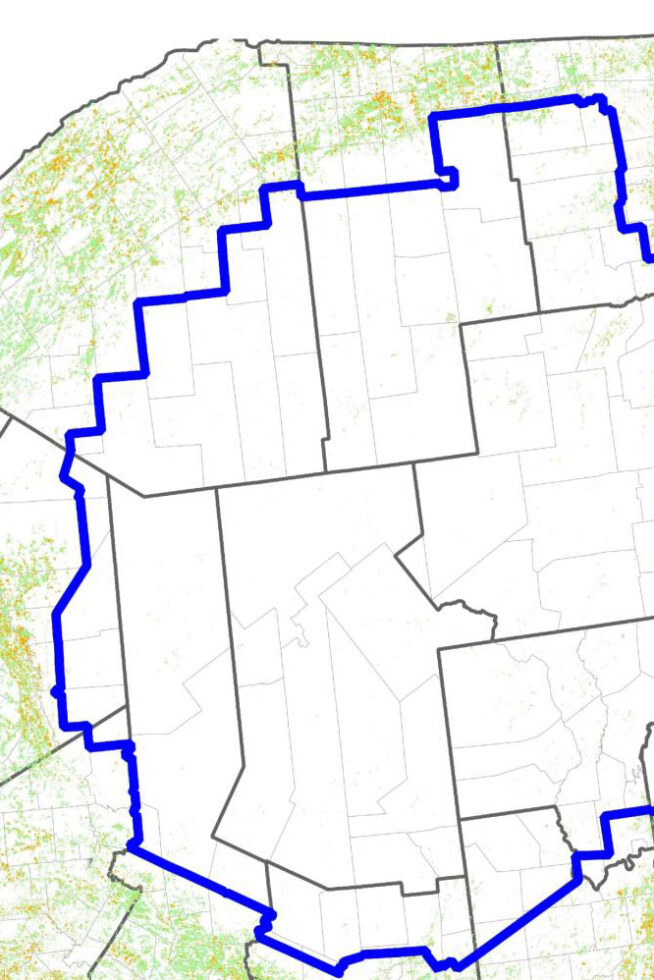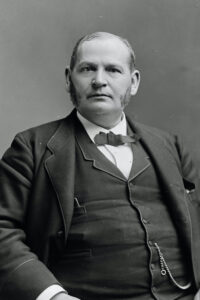
Humans have been present in the Adirondack region for thousands of years. The rugged mountains served as hunting grounds for nearby Native American peoples, such as the Mahicans and the Mohawks of the Iroquois Confederacy. These tribes did not live directly in the Adirondack Mountains but on lakes and in river valleys nearby.
According to Tuscarora historian Rick Hill, the Adirondack region was a Dish with One Spoon: The Dish With One Spoon reference in the Haudenosaunee Great Law of Peace expressly mandates conserving the game roaming about in the hunting grounds, as well as requiring its sharing and contains a promise to share equally in the harvests of the fields.
Before the 19th century, the wilderness was viewed as desolate and forbidding. As Romanticism developed in the United States, the view of wilderness became more positive, as seen in the writings of James Fenimore Cooper, John Muir, Henry David Thoreau and Ralph Waldo Emerson.
In 1868, land surveyor Verplanck Colvin raised the alarm about the depletion of Adirondack resources and in 1873 he recommended the creation of a state forest preserve covering the Adirondack region.
In 1884, continuing impoverishment of the Adirondack’s resources for private gain led the Legislature to appoint a four-member Commission, headed by Harvard University botanist Charles Sprague Sargent. The Legislature authorized the Sargent Commission to investigate the need for forest preservation in New York State. They recommended preserving and protecting State wildlands in the Adirondacks and the creation of a State forestry agency.
The Blue Line

The Sargent Commission’s work led to a series of maps based on surveys headed by Colvin.
Governor David B. Hill signed the law, on May 15, 1885, creating the Adirondack and Catskill Forest Preserves. The law required that all state lands in eleven Adirondack and three Catskill counties “be forever kept as wild forest lands.” This law also authorized the creation of a new Forest Commission to administer the law.
The Forest Commission created two more maps; the first shows forest preserve areas outlined in red, and the proposed park outlined in blue. The second shows a slightly different park proposal outlined in blue.
Use of a “blue line” to depict the proposed park boundary was the genesis of the term “Blue Line.”

On May 20, 1892, New York Governor Roswell P. Flower (Lake Flower in Saranac Lake is named for him) established the Adirondack Park for “the free use of all the people for their health and pleasure,” and for watershed protection.
Great Camps, Hotels, and One Special College
The 1849 publication of Joel Tyler Headley’s Adirondack; or, Life in the Woods triggered the development of hotels and stage coach lines.
By 1875, there were more than two hundred hotels in the Adirondacks including Apollos “Paul” Smith’s Hotel (1859-1930), one of the first wilderness resorts in Adirondacks, it was, in its day, the most fashionable of the many great Adirondack hotels, patronized by presidents Grover Cleveland, Theodore Roosevelt and Calvin Coolidge. The site of Paul Smith’s hotel would later become what it is today: Paul Smith’s College: The College of the Adirondacks. Although the donation of money and surrounding land for the College was made in 1937, the College would not officially open until 1946, when the first class of 150 students entered to study forestry and resort management.